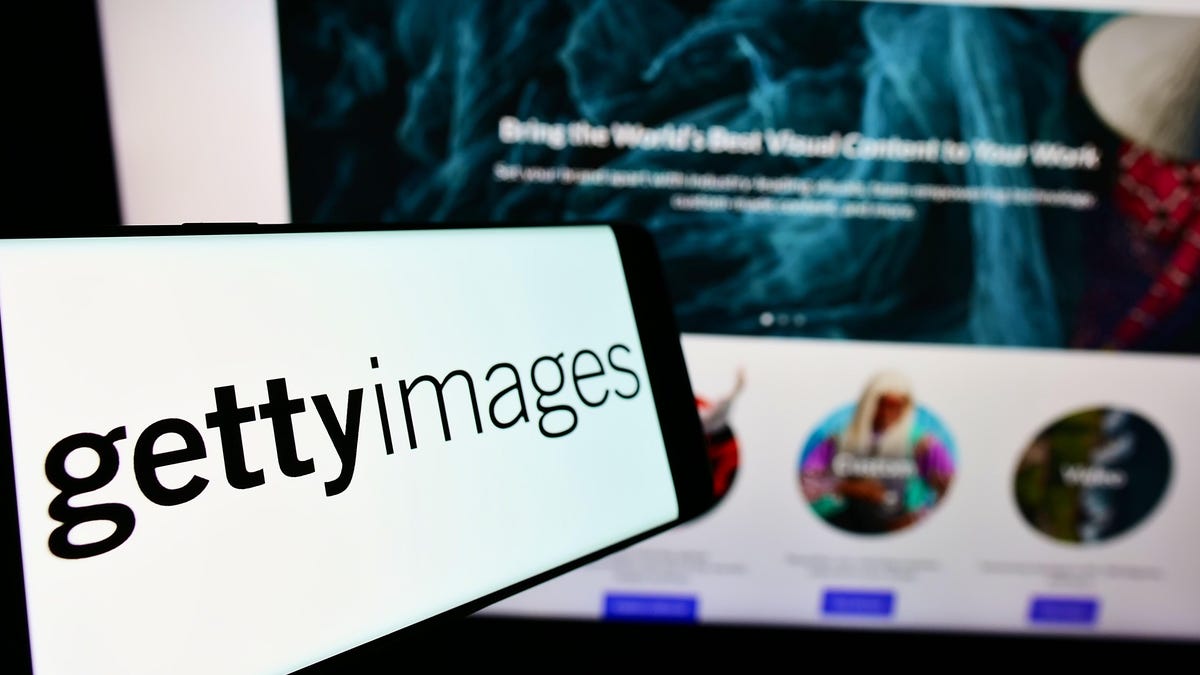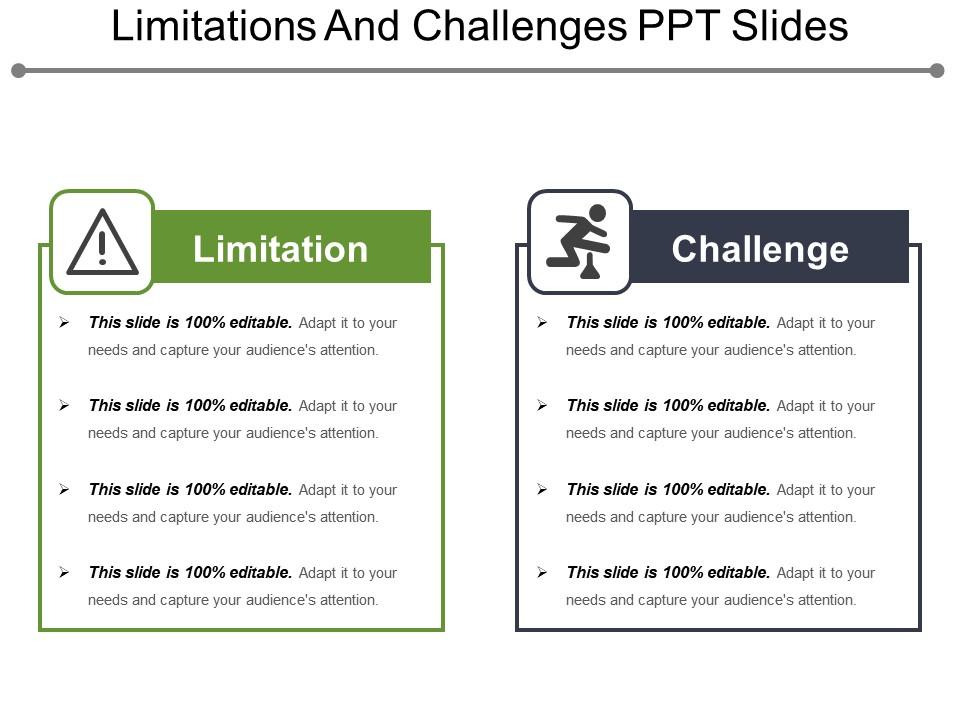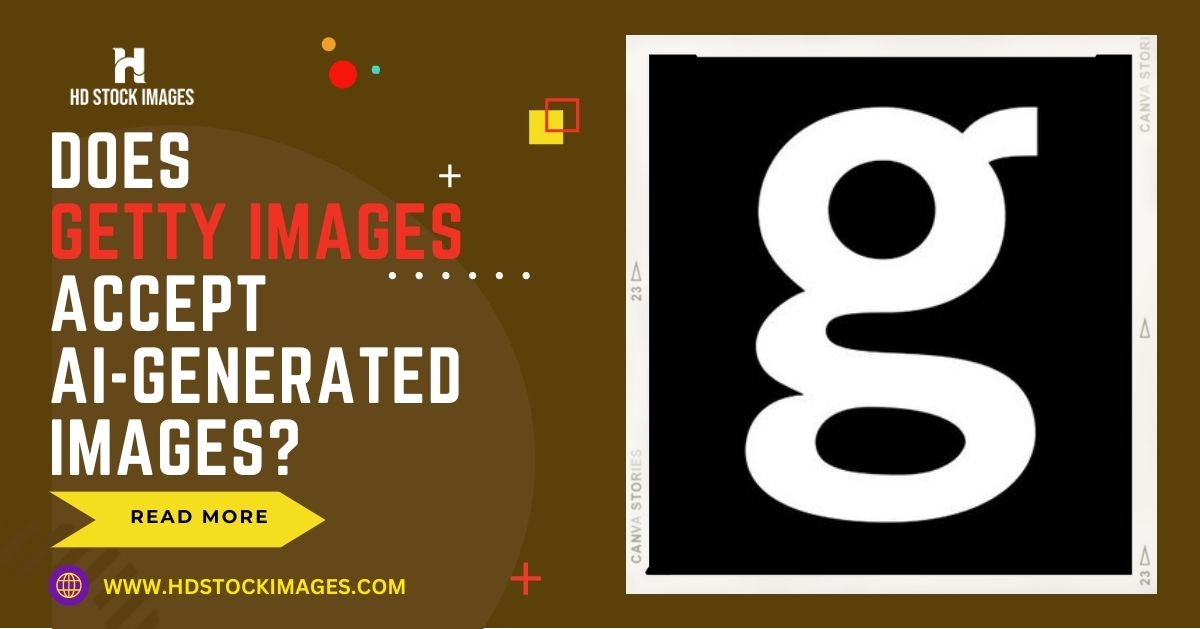I. Introduction
In recent years, the intersection of artificial intelligence and creative industries has given rise to significant advancements, and the world of stock photography is no exception. Getty Images, renowned as one of the leading stock photo agencies globally, has long been a go-to resource for creatives seeking high-quality and diverse visual content.This exploration aims to delve into Getty Images' stance on AI-generated images and shed light on the submission criteria, if any, that govern these technologically created visuals. The ever-evolving landscape of AI and its impact on creative content will be closely examined, along with the potential benefits and challenges that AI-generated images present to both content creators and consumers.Also Read This: The Art of Being Single: Crafting Your IMDb Page
II. Getty Images and AI-Generated Images
 A. Getty Images: A Leader in the Stock Photo Industry
Getty Images, founded in 1995, has grown to become one of the world's most prominent and reputable stock photo agencies. With an extensive collection of millions of images, videos, and illustrations, the platform serves as a go-to resource for designers, marketers, publishers, and content creators seeking high-quality visual content for various projects. Getty Images has established itself as a key player in the creative industry, catering to a wide range of clients across different sectors.B. AI-Generated Images: An Emerging Technological Advancement
AI-generated images, often created using advanced machine learning algorithms, have witnessed rapid development in recent years. These images are produced by computer programs, often based on deep learning techniques, which analyze vast datasets of existing visuals to generate new, synthetic content. The capabilities of AI in generating lifelike and realistic images have piqued the interest of various industries, including advertising, design, and entertainment.C. Applications of AI-Generated Images
The applications of AI-generated images span numerous sectors. These images have been used in advertising campaigns, website design, product showcases, and more. Additionally, AI-generated images have also found a place in industries like gaming, where they are utilized to create dynamic and immersive environments. Furthermore, AI-generated visuals have been employed in simulations and virtual reality to enhance user experiences.D. The Impact of AI on the Creative Process
The rise of AI-generated images has sparked discussions about the intersection of technology and human creativity. While AI can rapidly produce a vast quantity of images, it raises questions about the role of human photographers and artists in the creative process. Some argue that AI can complement human creativity, providing new tools and inspiration, while others express concerns about potential job displacement and the loss of the artist's personal touch.E. Benefits of AI-Generated Images
AI-generated images offer several benefits, both to content creators and consumers. For creators, AI can streamline the image generation process, saving time and effort. It can also assist in exploring new creative possibilities and expanding visual libraries. On the consumer side, AI-generated images can offer a cost-effective alternative to traditional photography, while maintaining high quality and visual appeal.F. Adoption of AI-Generated Images in the Creative Industry
Various companies and individuals have started experimenting with AI-generated images to meet their visual content needs. However, the adoption of AI-generated images in the creative industry is not without challenges, particularly in ensuring originality, legal compliance, and aesthetic quality.As the landscape of creative content continues to evolve with AI advancements, it is essential to understand Getty Images' position on AI-generated images and explore whether they have embraced this cutting-edge technology within their vast collection. The subsequent sections will delve into Getty Images' acceptance of AI-generated images, the specific submission criteria they may have, and the potential implications for the creative industry.This video explains How Does Getty Images Accept AI-Generated Images?
A. Getty Images: A Leader in the Stock Photo Industry
Getty Images, founded in 1995, has grown to become one of the world's most prominent and reputable stock photo agencies. With an extensive collection of millions of images, videos, and illustrations, the platform serves as a go-to resource for designers, marketers, publishers, and content creators seeking high-quality visual content for various projects. Getty Images has established itself as a key player in the creative industry, catering to a wide range of clients across different sectors.B. AI-Generated Images: An Emerging Technological Advancement
AI-generated images, often created using advanced machine learning algorithms, have witnessed rapid development in recent years. These images are produced by computer programs, often based on deep learning techniques, which analyze vast datasets of existing visuals to generate new, synthetic content. The capabilities of AI in generating lifelike and realistic images have piqued the interest of various industries, including advertising, design, and entertainment.C. Applications of AI-Generated Images
The applications of AI-generated images span numerous sectors. These images have been used in advertising campaigns, website design, product showcases, and more. Additionally, AI-generated images have also found a place in industries like gaming, where they are utilized to create dynamic and immersive environments. Furthermore, AI-generated visuals have been employed in simulations and virtual reality to enhance user experiences.D. The Impact of AI on the Creative Process
The rise of AI-generated images has sparked discussions about the intersection of technology and human creativity. While AI can rapidly produce a vast quantity of images, it raises questions about the role of human photographers and artists in the creative process. Some argue that AI can complement human creativity, providing new tools and inspiration, while others express concerns about potential job displacement and the loss of the artist's personal touch.E. Benefits of AI-Generated Images
AI-generated images offer several benefits, both to content creators and consumers. For creators, AI can streamline the image generation process, saving time and effort. It can also assist in exploring new creative possibilities and expanding visual libraries. On the consumer side, AI-generated images can offer a cost-effective alternative to traditional photography, while maintaining high quality and visual appeal.F. Adoption of AI-Generated Images in the Creative Industry
Various companies and individuals have started experimenting with AI-generated images to meet their visual content needs. However, the adoption of AI-generated images in the creative industry is not without challenges, particularly in ensuring originality, legal compliance, and aesthetic quality.As the landscape of creative content continues to evolve with AI advancements, it is essential to understand Getty Images' position on AI-generated images and explore whether they have embraced this cutting-edge technology within their vast collection. The subsequent sections will delve into Getty Images' acceptance of AI-generated images, the specific submission criteria they may have, and the potential implications for the creative industry.This video explains How Does Getty Images Accept AI-Generated Images?Also Read This: Crafting Smoke Rings with Creative Ideas
III. Getty Images' Acceptance of AI-Generated Images
A. Getty Images' Stance on AI-Generated Images Getty Images has been attentive to technological advancements in the creative industry, and AI-generated images have not gone unnoticed. As a forward-looking organization, Getty Images recognizes the potential of AI in transforming various aspects of visual content creation and consumption. However, their official stance on accepting AI-generated images into their collection has been a subject of interest and speculation.B. Presence of AI-Generated Images on Getty Images To assess Getty Images' acceptance of AI-generated images, it is important to examine whether such content is already present on their platform. While Getty Images is known for its diverse range of visual content, including photographs, illustrations, and videos, the specific inclusion of AI-generated images in their collection requires investigation. If AI-generated images are indeed found on Getty Images, it would suggest a level of acceptance and openness towards this innovative form of content creation.C. Guidelines and Policies for AI-Generated Content Getty Images, like any reputable stock photo agency, is likely to have stringent submission guidelines and policies to ensure the quality, originality, and legal compliance of the content offered on its platform. If AI-generated images are eligible for submission, it is essential to explore any specific requirements or restrictions that creators must adhere to when submitting such content. Understanding these guidelines will shed light on how Getty Images navigates the challenges and opportunities presented by AI-generated images.D. Licensing and Usage Rights for AI-Generated Images One critical aspect of stock photography is the licensing and usage rights associated with the content. Creators must be aware of the terms and conditions under which their images are used by customers. For AI-generated images, ensuring proper licensing and usage rights might present unique challenges, given the automated nature of their creation. Examining how Getty Images addresses these issues will provide valuable insights into their acceptance of AI-generated content.E. Feedback from Content Creators and Consumers Gauging the experiences and feedback of content creators and customers regarding AI-generated images on Getty Images is vital. Content creators who have attempted to submit AI-generated content can share their perspectives on the acceptance process, while customers can provide insights into the demand and reception of such content. Feedback from both sides of the platform will offer a well-rounded understanding of the role of AI-generated images in the Getty Images ecosystem.F. The Balance between AI and Human-Created Content Lastly, Getty Images' approach to balancing AI-generated images with human-created content is worth exploring. As AI technologies continue to evolve, it raises questions about the coexistence and synergy between the two approaches. Getty Images strategy in maintaining a diverse and high-quality collection, encompassing both AI-generated and human-created visuals, will play a crucial role in shaping the future of stock photography.By investigating these facets of Getty Images' acceptance of AI-generated images, we can gain a comprehensive understanding of their approach to this cutting-edge technology and its implications for the creative industry. The subsequent section will delve into the specific submission criteria that govern AI-generated content and the challenges and opportunities that arise in this domain.Also Read This: Import Adobe Stock into Premiere Pro Easily
IV. Submission Criteria for AI-Generated Images
As the creative landscape evolves with the integration of AI-generated images, Getty Images, like any reputable stock photo agency, is likely to have specific submission criteria to ensure the quality, originality, and legal compliance of the content offered on their platform. The submission process for AI-generated images may entail unique challenges and opportunities, considering the automated nature of their creation. Here are some key aspects of the submission criteria for AI-generated images on Getty Images:A. Image Quality and Resolution
1. High-Resolution Standards: Getty Images is known for its high-quality content, and AI-generated images must meet or exceed the agency's standards for resolution and visual clarity. 2. Artifacts and Distortions: AI-generated images may suffer from artifacts or distortions due to the nature of the algorithms used. Creators must ensure that submitted images are free from significant technical flaws.B. Originality and Copyright
1. Unique and Original Content: Getty Images requires all content to be original and not infringe upon existing copyrights or intellectual property rights. Creators must verify that the AI-generated images they submit are not replicated from copyrighted works or existing content on the platform. 2. Proof of Ownership: Creators may need to provide evidence of ownership or demonstrate that they have the right to submit the AI-generated images to Getty Images.C. Subject Matter and Commercial Viability
1. Demand and Relevance: AI-generated images must align with the demands and preferences of Getty Images' customers. The subject matter should cater to popular themes, trends, and commercial appeal. 2. Editorial vs. Commercial Content: Getty Images differentiates between editorial and commercial content, and AI-generated images must be categorized appropriately based on their usage rights and intended applications.D. Legal and Ethical Considerations
1. Model and Property Releases: If the AI-generated images contain identifiable individuals or private properties, creators must ensure that they have obtained the necessary model and property releases for commercial use. 2. Compliance with Copyright Law: Creators must ensure that the AI algorithms used to generate the images do not incorporate copyrighted material without proper authorization.E. Transparency and Attribution
1. Disclosure of AI Generation: Creators must transparently disclose that the images were generated using AI, avoiding any misrepresentation of human authorship. 2. Crediting AI Technology: If Getty Images requires it, creators should credit the AI technology or platform used to generate the images appropriately.F. Aesthetic and Creative Merit
1. Human Touch and Artistic Expression: Even with AI assistance, the images must demonstrate artistic merit and a human touch. Creators should strive to infuse their own creativity into the generated content. 2. Avoiding Stereotypes and Bias: Creators should be mindful of potential biases and stereotypes that AI algorithms may inadvertently introduce into the images, ensuring fair and diverse representation.G. Review and Approval Process
1. AI-Generated Content Evaluation: Getty Images' review process may involve specialized assessment for AI-generated images to ensure compliance with the platform's guidelines. 2. Approval and Rejection Criteria: Creators should be informed of the specific criteria that determine the approval or rejection of AI-generated content, offering transparency in the submission process.By adhering to these submission criteria, content creators can navigate the complexities of AI-generated image submission and contribute to the evolving landscape of visual content on Getty Images. As the technology and creative industry continue to evolve, Getty Images' approach to AI-generated content will play a significant role in shaping the future of stock photography.Getty Images shade: "We’re updating our submission guidelines to not accept AI-generated images. This is specific to images generated using AI-generative models, like Dall-E, MidJourney, StableDiffusion, et"#unplash
— David Sánchez (@davidsancar) September 21, 2022
Also Read This: How Do You Sell Photos to Getty Images: Tips for New Sellers
V. Challenges and Limitations
 Despite the potential benefits and advancements AI-generated images bring to the creative industry, there are several challenges and limitations that both creators and platforms like Getty Images must contend with. These challenges arise due to the unique nature of AI-generated content and its integration into the traditional landscape of stock photography. Some of the key challenges and limitations include:
Despite the potential benefits and advancements AI-generated images bring to the creative industry, there are several challenges and limitations that both creators and platforms like Getty Images must contend with. These challenges arise due to the unique nature of AI-generated content and its integration into the traditional landscape of stock photography. Some of the key challenges and limitations include:A. Technical Limitations of AI-Generated Images
1. Artifacts and Imperfections: AI algorithms may sometimes produce images with artifacts, distortions, or unrealistic elements, impacting the overall quality and visual appeal of the content. 2. Lack of Contextual Understanding: AI lacks a deep understanding of human emotions, cultural nuances, and context, leading to potential inaccuracies in representing certain subjects.B. Originality and Copyright Concerns
1. Copyright and Plagiarism: AI-generated images may inadvertently reproduce copyrighted elements from existing content, raising concerns about intellectual property rights and plagiarism. 2. The Definition of "Original": The question of whether AI-generated content can truly be considered original art, given its reliance on pre-existing data, remains a subject of debate.C. Ethical Implications
1. Bias and Stereotyping: AI algorithms trained on biased datasets may perpetuate stereotypes or inadvertently discriminate against certain groups, leading to ethical concerns in visual representation. 2. Misinformation and Fake Content: The ability of AI to generate highly realistic but entirely fictional images raises concerns about the potential for spreading misinformation and fake content.D. Coexistence with Human-Created Content
1. The Role of Human Creativity: AI-generated images challenge the role of human creativity in photography and the arts, potentially leading to concerns about the devaluation of human creativity and craftsmanship. 2. Job Displacement: The widespread adoption of AI-generated content may raise concerns about job displacement for photographers and artists who traditionally create visual content.E. Legal Challenges and Liability
1. Licensing and Attribution: Determining proper licensing and attribution for AI-generated images can be complex, considering the automated nature of their creation. 2. Copyright Infringement: Platforms like Getty Images must be vigilant in identifying and removing AI-generated content that infringes upon existing copyrights.F. Customer Perception and Acceptance
1. Customer Preferences: Customers might have varying degrees of acceptance or reluctance in using AI-generated content, affecting the demand for such visuals on platforms like Getty Images. 2. Aesthetic Considerations: Customers may prefer the unique style and emotional depth that human-created images offer, making it challenging for AI-generated images to fully replace traditional photography.G. Quality and Consistency
1. Standardization and Consistency: Maintaining a consistent standard for AI-generated images' quality, style, and relevance across the platform can be challenging, given the diverse range of AI algorithms and approaches used.Despite these challenges, advancements in AI technology and ongoing efforts to address ethical, legal, and technical concerns offer opportunities for overcoming these limitations. As the creative industry continues to embrace AI-generated content, platforms like Getty Images play a crucial role in striking a balance between AI-generated and human-created visuals, ensuring that both contribute to a rich and diverse landscape of stock photography. Understanding and addressing these challenges will be essential in shaping the future of visual content creation and consumption.Also Read This: What is the Most Watched Film of All the Time? Here is the Answer
VI. Future Outlook
 The future outlook for AI-generated images in the context of platforms like Getty Images is filled with both opportunities and challenges. As AI technology continues to advance, it is likely to have a profound impact on the creative industry, including stock photography. Here are some key points to consider in the future outlook for AI-generated images:
The future outlook for AI-generated images in the context of platforms like Getty Images is filled with both opportunities and challenges. As AI technology continues to advance, it is likely to have a profound impact on the creative industry, including stock photography. Here are some key points to consider in the future outlook for AI-generated images:
 admin
admin








